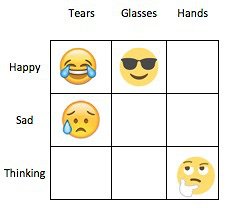In my own teaching, I frequently used Logic Blocks (or Attribute Blocks) to give children the chance to explore Venn and Carroll diagrams. As a follow-up to a previous article on sorting here are some thoughts on making the most of opportunities for logical reasoning and, in particular, using logic sets.
Logical reasoning is one of the problem-solving skills that we draw upon to solve a problem – others include working systematically, spotting patterns, making conjectures and using trial and improvement. Thinking logically is an important element of mathematics, with mathematical proof and relationships explored through explaining, justifying, verifying and convincing – all parts of logic and reasoning.
Sorting according to one criterion is the start of logical thinking. So, with Venn and Carroll diagrams, cows in the circle, other farm animals outside the circle or green shapes in the left box, other shapes in the right. Sorting and classifying then progresses in complexity by the number of attributes there are.
This is where Logic Blocks are great. They are sets of plastic or wooden shapes usually with four attributes – shape, colour, size and thickness. This makes them perfect for sorting.
To the right is a set of shapes sorted by colour, shape and size on to a Carroll diagram.
As well as sorting on Venn, Carroll and tree diagrams, Logic Blocks can be used to make ‘Logic Chains’. Children in pairs have a set of Logic Blocks and try to make a chain of shapes with a single attribute difference between each one.
As a challenge, ask the children to make a circular chain of 12 shapes so that the pattern of one attribute changing is continuous.
Adrian Pinel wrote an article many years ago about children building their own logic sets to gain a better understanding of the inherent structure for sorting. It is a very good idea, and can be linked to a context that matches the work you are doing. Let the children decide how items can be sorted in a simple way with perhaps 9 different possibilities (3x3).
Adrian’s example involved a ‘Health and Safety’ theme, with a teddy bear having an injury that could be a cut, a bruise or a burn which could affect his head, trunk or limbs. This gives 9 possibilities for children to sort by (as shown on the grid). Each of the 9 possible teddies could be drawn or made and then used to sort by different criteria. "Can you sort the teddies so we have all those with head injuries and all those with cuts?"
This 3x3 grid is a useful way of working out all the possibilities and can be used for different contexts. As it is Safer Internet Day on 7th February, what about making an Emoji logic set?
Here is an example, but obviously the children may decide on their own attributes and go beyond three. Think about questions to ask to sort them in different ways: "Can you use a venn diagram to find out which emojis are thinking ones and which are not wearing glasses?"
Sorting out Venn and Carroll diagrams
An outline of progression in sorting and sets
Shape, problem solving and handling data
Sorting shape activities for KS1 and KS2











